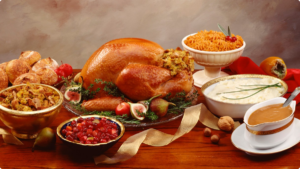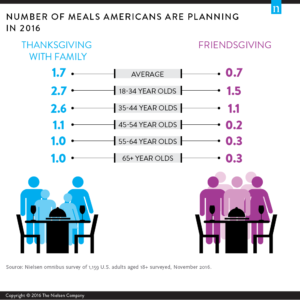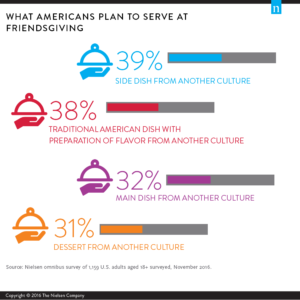I noted with interest yesterday morning that Sears Holdings would be closing 150 full-line stores but shrugged my shoulders as this was a necessary step for a retailer that has struggled for years. My eyebrows raised sky-high however this morning when I learned that they are also selling off one of the crown jewels, Craftsman brand tools, to Stanley Black & Decker.
January is always a date of reckoning for retailers as they examine whether the holiday sales propelled them into the black (in spite of the myth around the Black Friday moniker) or provided further evidence of failure in product mix, pricing and consumer engagement due to flagging same store sales. Obviously the news demonstrates that Eddie Lampert’s empire continues to crumble. Whatever the vision is here, the sale of Craftsman is the final nail in the coffin for Sears as an ongoing concern. Yes the zombie business will continue to lurch about in the dark grasping for opportunities but as Seritage continues to close stores and attempt to recoup the value of the underlying real estate, it must be evident to anyone paying attention that Lampert is past the long game of building a successful Sears as a retailer.
Point of acknowledgement, I started my career at Sears working in the Credit division back in the heyday of Arthur Martinez and was at the cutting edge as the company dove into the nascent web. But even more, as a kid, Sears was a core part of my childhood. It was the department store we visited for the annual school shopping trip as my mother loaded up on knock off low top Chuck Taylors – or bobos as we called them back then – Toughskins jeans and striped shirts. It was the catalog source of all Christmas goodness that a kid would study for weeks as he evaluated what was possible and created a wish list for Santa. I even spent one Christmas season as a young teenager hired to demo the AG Bear and more importantly the Petster cat robot in the toy aisles of a Sears. It seemed like you could get anything at Sears from keys cut and Zippo lighters personalized – I still have the first one I bought as a 12 year old pyromaniac – to watches, tools, appliances, computers. Honestly, we bought my first laptop from Sears, my first Armitron digital watch which happened to play Fur Elise, and most of my Dad’s tools. If we needed a new appliance we bought a Kenmore from Sears. If the dishwasher was acting up we visited the Sears Repair and Parts center for the necessary components. I recall more than one family photo taken in the Sears photo studio. And when the car needed a new battery we installed a new DieHard. When we needed a new mattress after getting married we bought it at Sears.
So that in part is what brings such dismay at the news that Sears is unloading the Craftsman brand. It was rumored back in June but I honestly didn’t believe that would happen so soon. Craftsman is such a fundamental part of the Sears identity.
When you walked into any Sears store you always knew that there was a guarantee that backed up a sale: “Satisfaction guaranteed or your money back.” And I was not surprised the first time I walked into Sears Headquarters on Beverly Road and saw those words fixed on the wall above the entrance in 3 foot high shiny aluminum letters. So storied was the Craftsman brand that my father liked to regale our friends with how he witnessed a guy walking into the tools department with a 16 inch long 5/16 slotted screwdriver, that had quite obviously been abused as a pry bar, requesting a new screwdriver because his could no longer properly perform its proper function. And the associate gladly exchanged the tool. There was loyalty to the brand because the tools were reliable. Now, Craftsman has fallen on hard times and the quality of the tools are not always what they once were as I’ve found myself gravitating to Snap-On and other brands when I need a tool that I can count on. So perhaps this is just an overdue acknowledgement that more than just the store format and assortment has lost its way.
But once upon a time Sears was a serious innovator and this should be a cautionary tale for anyone who wants to build a brand toward greatness. Most do not realize that Sears was a keen innovator in many of the evolutionary efforts to sell what consumers needed. The catalog is well known but the movement into retail stand alone stores and malls in the suburbs was a big push by Sears. The concept of a retail credit card started with lists of customers managed at each store and eventually the blue Sears card was the most common credit card in every American’s wallet to the point that 1 in 3 Americans carried and used it.
So what happened? Sears was a casualty of navel gazing and losing track of what made it great: delivering a quality product to customers with great service and providing what customers wanted at a good price. The retail sector fragmented in the 90s and suddenly Sears no longer knew who their customer was. Walmart and the Dollar Stores squeezed them from the bottom, Target brought design but budget conscious consumers great products in a bright and cheery buying experience, and all kinds of specialized box stores delivered higher quality products with a focused delivery in sectors like hardware, appliances, TVs and electronics. No one thought of shopping at Sears because in being swallowed by Kmart it followed that business down the rabbit hole of little investment in the stores or the assortments. I recall when the merger was announced sitting in a marketing class at Kellogg where a number of us in the class had experience working for Sears. No one could come up with a defense for Lampert’s vision if it meant making the two stores remain successful and not going the route of Woolworths. We looked at the onslaught of Amazon and the encroachment from all other sides and determined the only way out was to capitalize on the assets. And that it seems is the logical demise of the store.
Yes, Lampert believes he can create this amalgamation of the new millennial retail with an innovative online presence welded to a brick and mortar presence. In 1998 we discussed a vision of allowing the customer to make the buying decision Any time, Any place, Any way – something that has evolved substantially since those early days of e-commerce and mobile computing. But to me that obsession is no longer the issue for Sears. The bigger question is encouraging customers to shop at Sears. Why should I choose Sears over Target, Walmart, Costco, Amazon, Zappos, Nordstrom, JC Penneys? Every one of those retailers except for Amazon and Walmart has seen their market cap decline in the last 10 years but that really speaks to changing buyer behavior. The question that needs to be solved is who is the target Sears customer and what are they looking for? As we discuss in ITW the question of who is your 80 customer drives every single decision. Who are the customers that believe in your Brand and why do they shop with you? What can you do to increase the share of wallet they contribute to you?
My wife used to be a regular customer at Sears but she won’t even set foot in the store any longer because the layout and footprint are chaos. “Too crowded (as in the racks are too bunched together), too hard to find an associate to help, too little in selection that is attractive to me or for my kids, the lighting is dim and the whole feel of the store is dismal.” This is the description of the Woodfield Mall store which for decades was the flagship store given its close proximity to HQ and placement within one of the best malls in the Midwest. I haven’t used my Sears card in 3 years and I only make the trip to the Woodfield store if I need a particular tool that I can’t find at the closer Home Depot or can’t wait for Amazon and Snap-On to deliver to me. If Lampert wants to be the competitor to Amazon he needs to provide a more compelling offering than Prime 2-day delivery of practically everything a customer could need for their home with ease of delivery, excellent pricing and no fuss returns. I know this will pain friends I have on one side of the equation and delight those on the other but in our house Amazon, Target, Costco and occasionally Walmart trumps Sears 9 times out of 10. Maybe we’re no longer the target customer but then who is?
Only being able to answer that question will resolve the problems Sears is facing. Lampert once believed he would be the next generation Buffett and the SHLD stock skyrocketed in 2007 on the market’s perception that he could build a retail juggernaut with carefully curated selections like Land’s End, Renovation Hardware, and other key assets. But to really successfully do that would have required a very different culture and a very different management style. My impression at that time when the firm I was working for was called in to present an approach for building a culture of innovation within Sears to the senior leadership on “Mahogany Row” was that the leadership, the vision, the intuitive understanding and the willingness to commit was lacking. We presented a plan and all I heard were platitudes and a view to chaos across an organization that was ingrained as historically extremely command and control. To manage the juggernaut that Lampert spoke of would have required a very loose and decentralized organization that allowed businesses to excel in pursuing their customers.
And hence here we are 10 years later watching the dying gasps of a once great company. Gary Balter from Credit-Suisse put it quite succinctly: “We continue to believe that Sears will sell off or spin off assets in a controlled liquidation of its chain, monetizing the assets least tied in with Sears’ U.S. stores first. However, over time, selling off the profitable assets is unlikely to be a winning strategy.”
That was almost 5 years ago and Balter should hang his hat on that prediction.
Sad day indeed.



